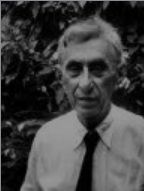The crisis of 1935
The United States passed its American Silver Purchase Act on 19 June 1934: this caused the price of silver to increase and as a result, in Mexico, silver coins began to be hoarded to be remelted at a profit. On 25 April 1935 the Mexican government reacted with a series of reforms, changing the fineness of its coinage, and withdrawing silver coins from circulation. It had ordered 50c coins (tostones) and $1 Banco de México notes from the United States but until these arrived the sudden shortage of small change led many local Chambers of Commerce to agree with the local banks to issue scrip in the form of bearer cheques (cheques al portador).
The cheques were of low denominations, backed by deposits in the banks, of voluntary (but general) acceptance and redeemable on demand (occasionally stated as in multiples of five pesos, the lowest value banknote).
Mérida
Cámara Nacional de Comercio
At 8 o’clock in the morning of 29 April a meeting was held in the Cámara de Comercio to discuss issuing cheques. The president, José María Medina Ayora, showed off some of the $1 cheques that the Cámara has issued in November 1913 and reported that estates (fincas) were issuing vales for use in their stores, but the problem remained in the city. They decided to issue 70,000 $1 cheques[image needed] drawn on the local branch of the Banco de México, where the Chamber would deposit $70,000 to guarantee the issue. They telegraphed the Secretaría de Hacienda in Mexico City for official authorisation.
The cheques were printed by the Compañía Tipográfica Yucateca, S. A. and stated that they were redeemable in múltiples of five pesosDiario de Yucatán, Tomo XXV, Año X, Núm. 3110. 30 April 1935: Diario del Sureste, Mérida, Año IV, Tomo XIV, Núm. 1256, 30 April 1935. They were divided into six groups for signing: five carried the facsimile signature of president Medina Ayora and the signature of one of the Vocales, of the Secretario or of the Tesorero, whilst the sixth had the autograph of the president and facsimile of one of the VocalesDiario del Sureste, Mérida, Año IV, Tomo XIV, Núm. 1257, 1 May 1935.
|
He founded his first pharmacy, Del Bazar, in 1910, and much later, in 1932, Las Dos Caras and Drogas, S. A., and finally, El Gallito, and was an early promotor of the virtues of talcum powder, producing it under the logo of Las Dos Caras. He was alcalde of Mérida in 1929 and constructed a new façade to the Palacio de Gobierno and the clock tower. He served as tesorero general del Estado at the beginning of the 1930s. He died on 8 August 1968. |
The cheques began to circulate on 2 MayDiario de Yucatán, Tomo XXV, Año X, Núm. 3111. 1 May 1935 .
The first $1 notes of the Banco de México arrived by aeroplane on 15 MayDiario del Sureste, Mérida, Año IV, Tomo XIV, Núm. 1270, 15 May 1935).

 José María Medina Ayora was born in Ticul, Yucatán, on 26 March 1878, to a prominent family.
José María Medina Ayora was born in Ticul, Yucatán, on 26 March 1878, to a prominent family.